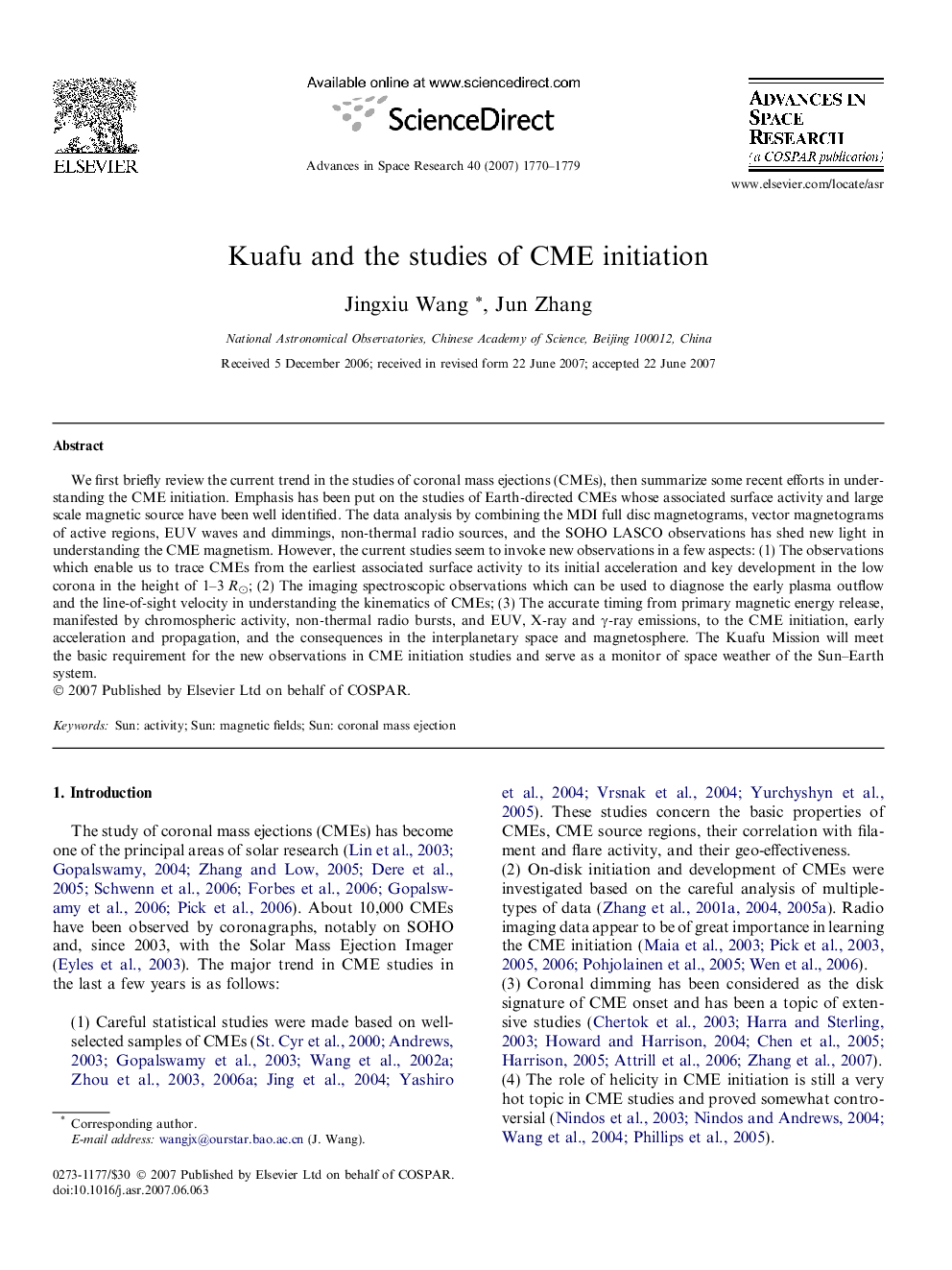| Article ID | Journal | Published Year | Pages | File Type |
|---|---|---|---|---|
| 1767562 | Advances in Space Research | 2007 | 10 Pages |
Abstract
We first briefly review the current trend in the studies of coronal mass ejections (CMEs), then summarize some recent efforts in understanding the CME initiation. Emphasis has been put on the studies of Earth-directed CMEs whose associated surface activity and large scale magnetic source have been well identified. The data analysis by combining the MDI full disc magnetograms, vector magnetograms of active regions, EUV waves and dimmings, non-thermal radio sources, and the SOHO LASCO observations has shed new light in understanding the CME magnetism. However, the current studies seem to invoke new observations in a few aspects: (1) The observations which enable us to trace CMEs from the earliest associated surface activity to its initial acceleration and key development in the low corona in the height of 1-3 Râ; (2) The imaging spectroscopic observations which can be used to diagnose the early plasma outflow and the line-of-sight velocity in understanding the kinematics of CMEs; (3) The accurate timing from primary magnetic energy release, manifested by chromospheric activity, non-thermal radio bursts, and EUV, X-ray and γ-ray emissions, to the CME initiation, early acceleration and propagation, and the consequences in the interplanetary space and magnetosphere. The Kuafu Mission will meet the basic requirement for the new observations in CME initiation studies and serve as a monitor of space weather of the Sun-Earth system.
Related Topics
Physical Sciences and Engineering
Earth and Planetary Sciences
Space and Planetary Science
Authors
Jingxiu Wang, Jun Zhang,
